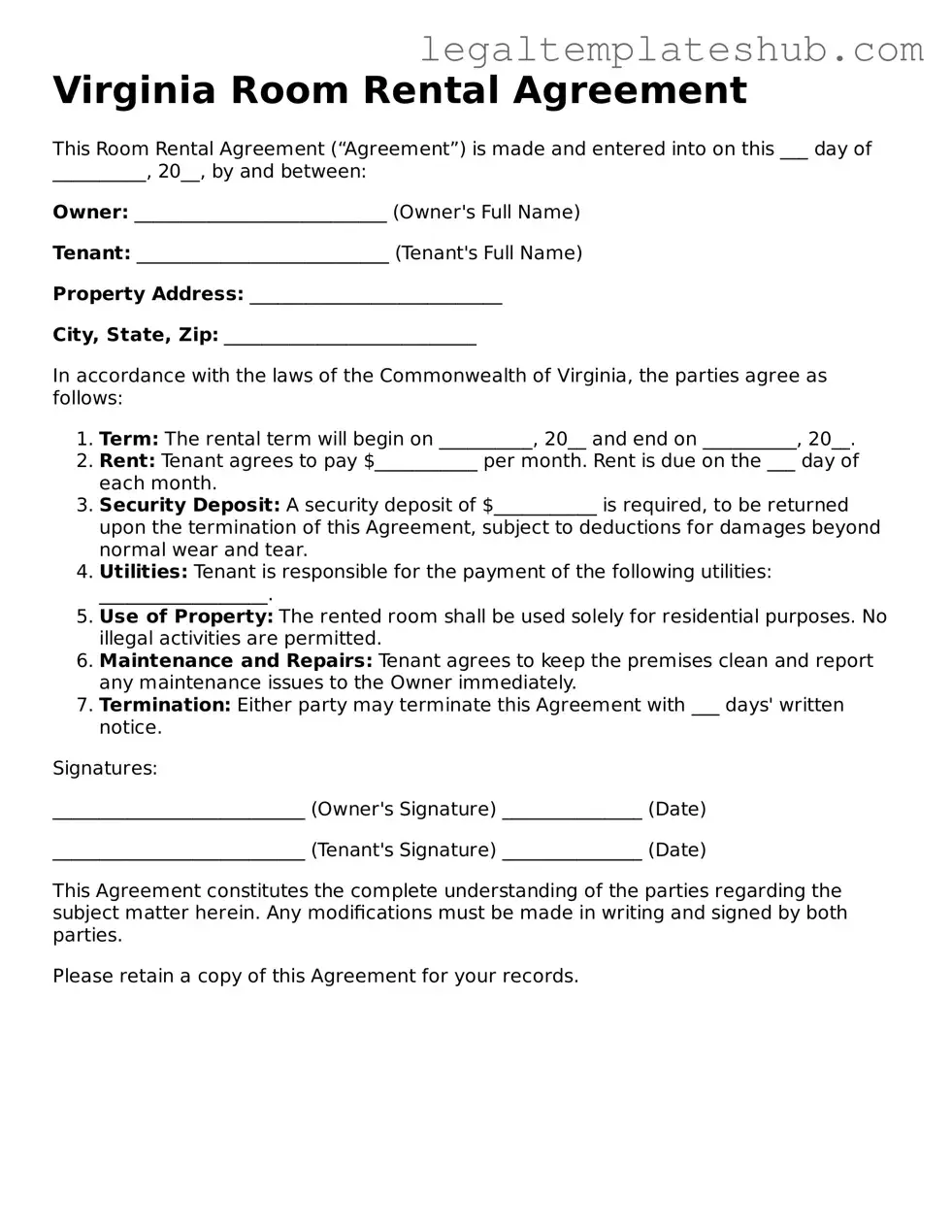Printable Room Rental Agreement Document for Virginia
The Virginia Room Rental Agreement is a legal document that outlines the terms and conditions between a landlord and a tenant for renting a room. This agreement helps protect the rights of both parties and ensures clear communication regarding expectations. To get started, fill out the form by clicking the button below.
Access Editor
